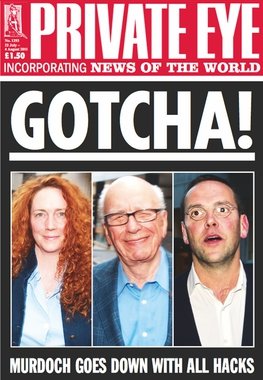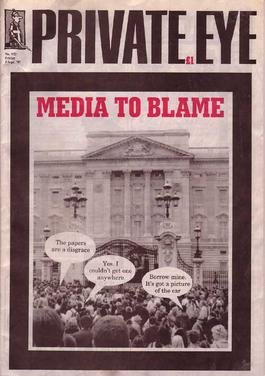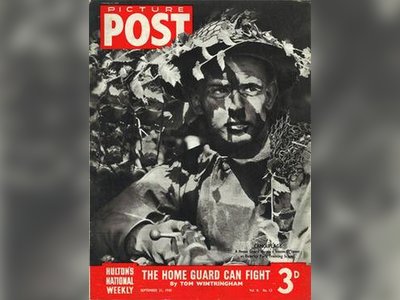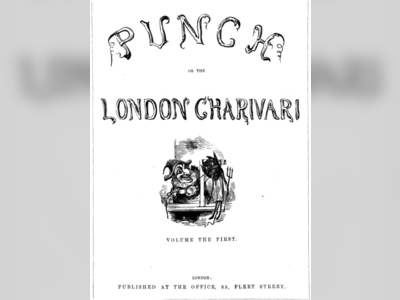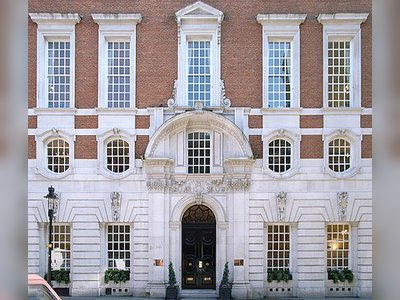British Heritage
Remember, Cherish, Learn.
beta
Private Eye
A Pillar of British Satirical Journalism.
Contribution to British Heritage
Private Eye, a renowned British fortnightly satirical and current affairs news magazine, stands as an influential pillar of British heritage. Founded in 1961, the publication has continuously delivered sharp wit, fearless criticism, and in-depth investigative journalism to its readers. The magazine's satirical edge and unrelenting lampooning of public figures have made it a symbol of freedom of speech and press in the United Kingdom. Throughout its history, Private Eye has fearlessly tackled under-reported scandals, cover-ups, and issues of public interest, keeping the nation informed and entertained.
As Britain's best-selling current affairs magazine, Private Eye has played an instrumental role in shaping public discourse and challenging the status quo. Its witty in-jokes and recurring gags have transcended its pages, permeating British culture and becoming part of the nation's shared humor.
Legacy and Success
Led by editor Ian Hislop since 1986, Private Eye has exhibited a deeply rooted resistance to change, holding fast to its traditional format of being printed on cheap paper and resembling a comic more than a glossy magazine. Despite the changing landscape of print media, the magazine's readership has remained loyal, and it achieved its highest-ever circulation in the second half of 2016, a testament to its enduring success and relevance.
The magazine's investigative journalism has not come without risks, as Private Eye's commitment to reporting on powerful figures and important issues has led to numerous libel suits. Ian Hislop, a tenacious defender of press freedom, has become one of the most-sued individuals in English legal history. Nonetheless, the publication remains privately owned and highly profitable, enabling it to continue its bold reporting and satirical commentary.
Contribution to British Heritage
Private Eye's contribution to British heritage goes beyond mere circulation numbers and legal battles. It has offered a unique platform for satire, humor, and investigative reporting, enriching the country's media landscape and fostering a sense of critical thinking among its readers. The magazine's "Street of Shame" column, which addresses journalistic misconduct and excesses, has acted as a watchdog for the media industry, promoting accountability and ethical reporting.
The magazine's commitment to investigating local, regional, and national political issues under the "Rotten Boroughs" column has exposed corruption and incompetence within the government and contributed to broader discussions about political transparency and accountability.
Additionally, Private Eye has showcased the talents of numerous writers, cartoonists, and artists, many of whom have been prominent figures in public life. Their witty pseudonyms and creative contributions have added to the magazine's charm and timeless appeal, further embedding its legacy in British popular culture.
General Information and Format
Private Eye's roots trace back to The Salopian, a school magazine published at Shrewsbury School in the mid-1950s. Founded by Richard Ingrams, Willie Rushton, Christopher Booker, and Paul Foot, the publication's inception occurred after the discovery of a new printing process, photo-litho offset. This process allowed for easier production, leading to the birth of Private Eye in 1961, initially funded by Andrew Osmond.
Throughout its existence, the magazine has seen several prominent contributors, including Peter Cook, Auberon Waugh, Claud Cockburn, Gerald Scarfe, and more. Its content covers a wide range of current affairs, employing satire to highlight the errors and hypocritical behavior of newspapers in the "Street of Shame" column, and engaging in in-depth investigative journalism under the "In the Back" section.
Private Eye's satirical spirit is reflected in its use of pseudonyms and creative references to public figures, as well as its long-standing caricature of Lord Gnome as the fictional proprietor. The magazine has been known for its use of euphemisms to avoid libel suits and its playful nicknames for individuals and entities.
In terms of format, Private Eye has maintained its distinctive style, which includes predominantly black and white pages, with the cover and some cartoons appearing in color. Resisting the trend towards digitalization, the magazine has chosen to stick with its traditional print format, adding to its charm and distinctive character.
Conclusion
Private Eye, the British fortnightly satirical and current affairs news magazine, has made a significant contribution to British heritage through its sharp wit, fearless criticism, and in-depth investigative journalism. Despite legal challenges and the changing landscape of media, the magazine's enduring popularity and cultural impact are a testament to its place in the nation's heart. From lampooning public figures to uncovering hidden scandals, Private Eye remains an essential part of the British media landscape, upholding the values of freedom of speech, press, and critical thinking.
- Private Eyeen.wikipedia.org
